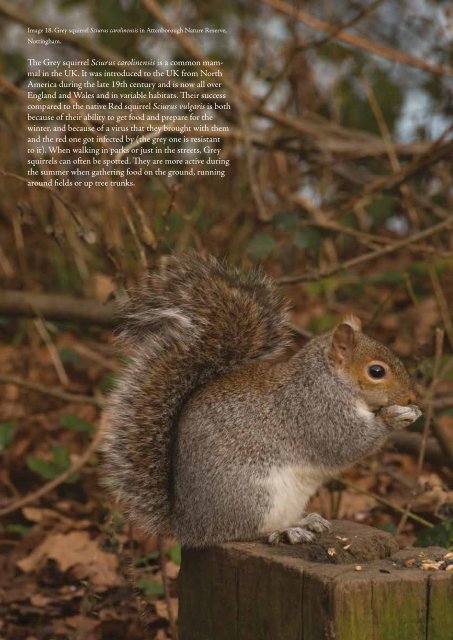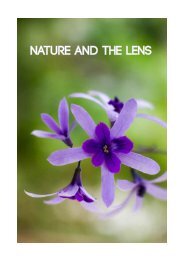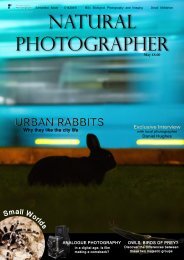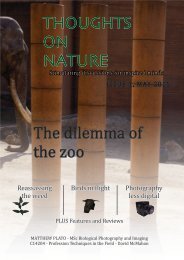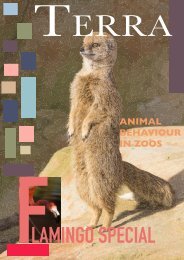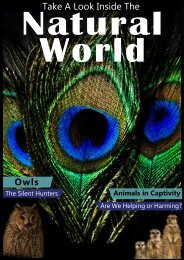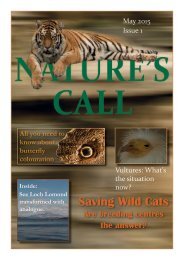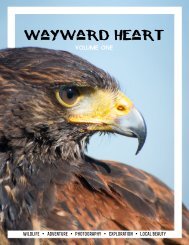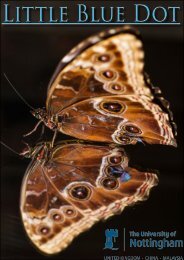NATURA
You also want an ePaper? Increase the reach of your titles
YUMPU automatically turns print PDFs into web optimized ePapers that Google loves.
Image 18. Grey squirrel Sciurus carolinensis in Attenborough Nature Reserve,<br />
Nottingham.<br />
The Grey squirrel Sciurus carolinensis is a common mammal<br />
in the UK. It was introduced to the UK from North<br />
America during the late 19th century and is now all over<br />
England and Wales and in variable habitats. Their success<br />
compared to the native Red squirrel Sciurus vulgaris is both<br />
because of their ability to get food and prepare for the<br />
winter, and because of a virus that they brought with them<br />
and the red one got infected by (the grey one is resistant<br />
to it). When walking in parks or just in the streets, Grey<br />
squirrels can often be spotted. They are more active during<br />
the summer when gathering food on the ground, running<br />
around fields or up tree trunks.<br />
Image 19. Brown rats Rattus norvegicus in Attenborough Nature Reserve, Nottingham.<br />
There are two species of rats in the UK, the Black rat<br />
Rattus rattus and the larger, more numerous Brown<br />
rat Rattus norvegicus. Neither of them is native. They<br />
arrived on shores as stowaways from Asia, and have<br />
spread around. The general judgment is that rats are a<br />
plague and a lot is done to discard them. That is mainly<br />
due to the belief that rats can spread diseases like the<br />
epidemic Black Death, as well as the great plague of<br />
London that occurred in the 17th century.<br />
Rats are rodents, they can destroy things with their<br />
teeth and they eat a lot. They are an example of species<br />
that has adapted and succeeded extremely well in urban<br />
environments. People do their best to control their<br />
population. One way is to intoxicate them, but research<br />
show that rats have evolved a great resistance to poison<br />
so often that method does not work. An effective way<br />
that seems to work is to limit the source of food available<br />
for rats. We often evaluate species from our point of<br />
view, forgetting that other species can benefit from rats.<br />
Some birds feed on rats so their success is not bad for<br />
all.<br />
The common hedgehog Erinaceus europaeus is more welcome<br />
in urban areas than rats. Hedgehogs are considered<br />
harmless and even useful as they eat many garden<br />
pests. They are common in fields, hedgerows, woods<br />
and in gardens. They can normally be seen during the<br />
warmer months and they are mostly active at dusk and<br />
at night.<br />
Unfortunately, the hedgehog population in Britain is<br />
declining. Most surveys attain the same conclusion that<br />
about a quarter of the hedgehog population has been<br />
lost in the last ten years. The reason is not known for<br />
sure, but possible reasons are changes in agriculture<br />
leading to changes in habitats and use of pesticides to<br />
reduce their prey stocks (invertebrates and small vertebrates).<br />
Other explanations include smaller and tidier<br />
gardes often closed with fences that the hedgehogs<br />
cannot get through. In addition to this, the cities are<br />
getting bigger leading to more isolated populations of<br />
hedgehogs. Furthermore, a lot of animals get killed on<br />
the roads trying to get between places.<br />
natura_____19


